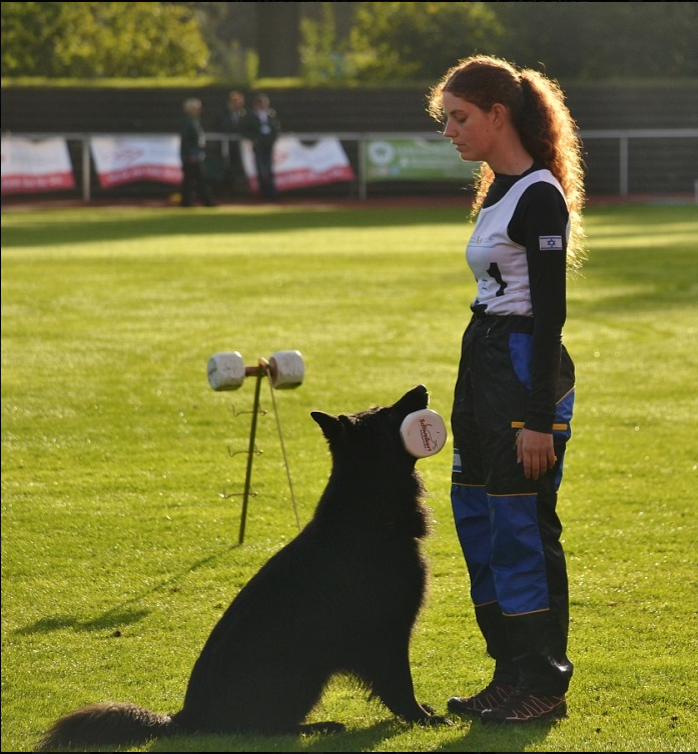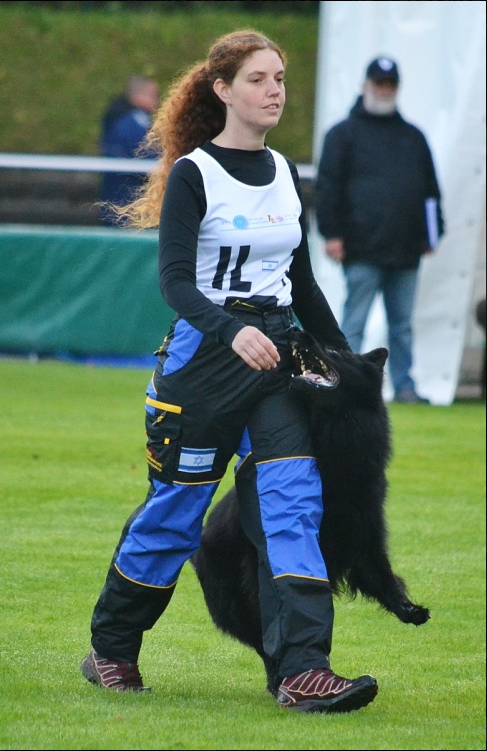From working dogs and world championships to training animals for research purposes
I served two years at the Israeli Police in the dog handler unit. My main goal was to raise and train young puppies to serve as scent detection and protection dogs. Puppies of good working dogs are like rough diamonds. The goal in the early stages of training is to build a dog that is very confident and has very high levels of prey drive (the natural instinct to chase and bite a moving object). Working dogs work because for them the work is the reward. For sent detection dogs, the search after the source of a scent is a reward by itself, as it allows them to express their natural behavior. In addition, they know that when they find the source of the scent, they will be rewarded with their favorite toy. Just think of all the summers you spent working as a kid, to earn money, to buy the thing that you desired. However, would you still be working so hard if your parents would have gifted you everything you ever wanted?

When training working dogs, we need to hit a fine balance, rewarding them just enough so they want to continue working but not too much, so that they lose interest. This becomes especially difficult when considering that working dogs should remain motivated and interested in their work for long periods of time. This kind of training requires a deep understanding of the animal’s natural instincts and motivation so that we can utilize it to achieve the behaviors we desire. In the “rough diamond” approach, we first build up the animal’s motivation and later sculp the fine details of the behavior that we desire.

Between 2015-2017 I represented Israel with my personal dog in four IPO world championships (FCI IPO WM 2015-2017 & WUSV WM 2026). IPO (today known as IGP) is a dog sports that developed from the training of working dogs. This sport is like the Ironman of dogs because it includes tracking, obedience and protection. Each of these sections relies on different instincts. Because high-level dog sport is very competitive, in order to receive good markings, dog handlers must perfect very little details in the behaviors of their dogs. If you want to reach a high score, it’s not enough that your dog lays down, you also want him to do it fast, raising all four legs at the same time and landing in a straight line. To achieve these fine details the trainer needs to first build a “rough diamond” and then think of very creative ways to channel the dog’s high levels of drive, energy and motivation in the right direction.
Today I mostly work as an animal trainer for research purposes. In research we often want the animal to perform a specific behavior so that it gives us a glimpse into the cognitive mechanisms that the animal uses (for example, check out my pig MRI training). Unlike working dogs, we might find ourselves working with an animal that is not so motivated. I find that if we want an animal to cooperate with us, we first need to ask “how do I motivate him/her?”. After we have our “rough diamond” we can find creative ways to channel this motivation and sculpture our jewel.